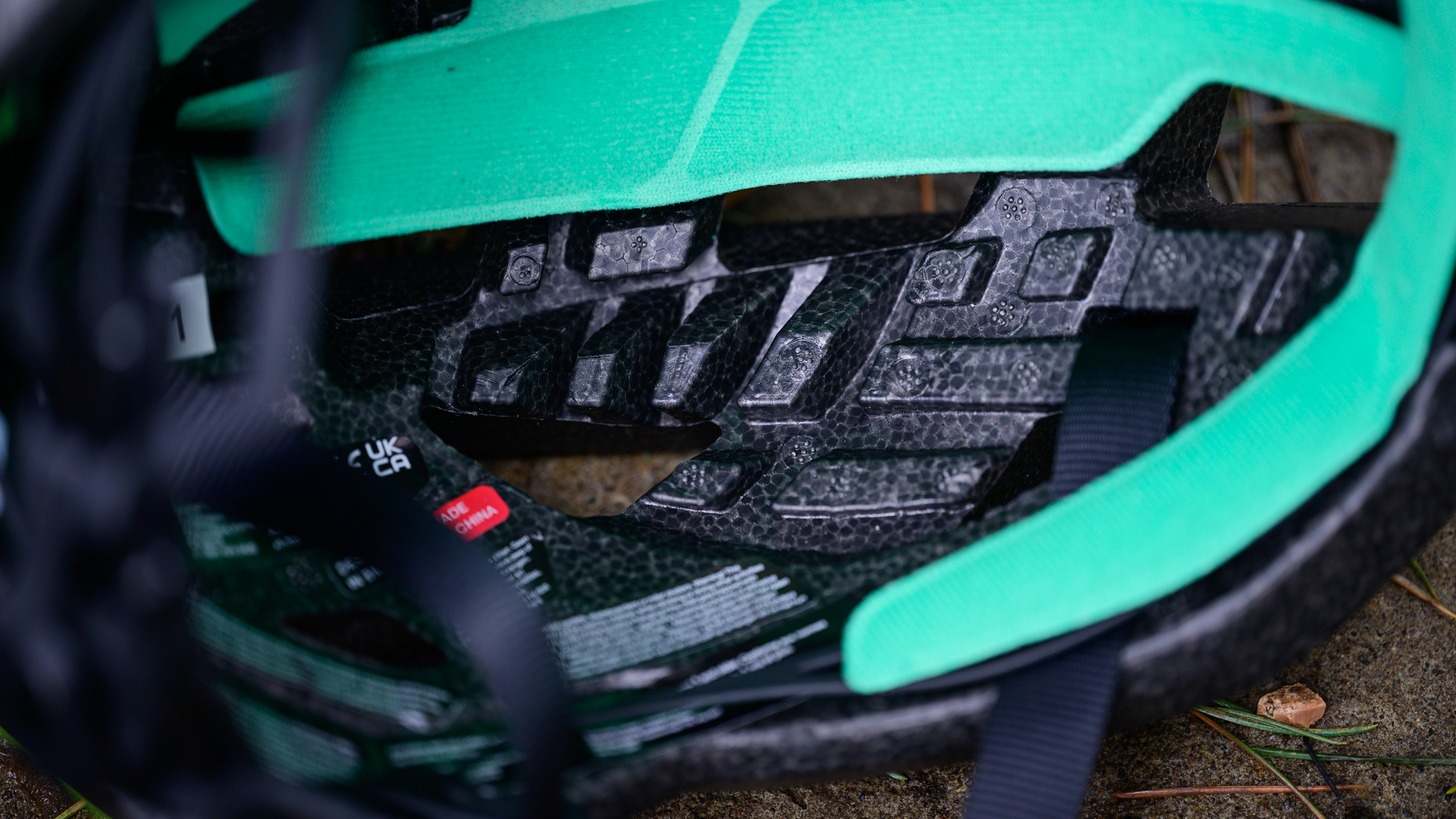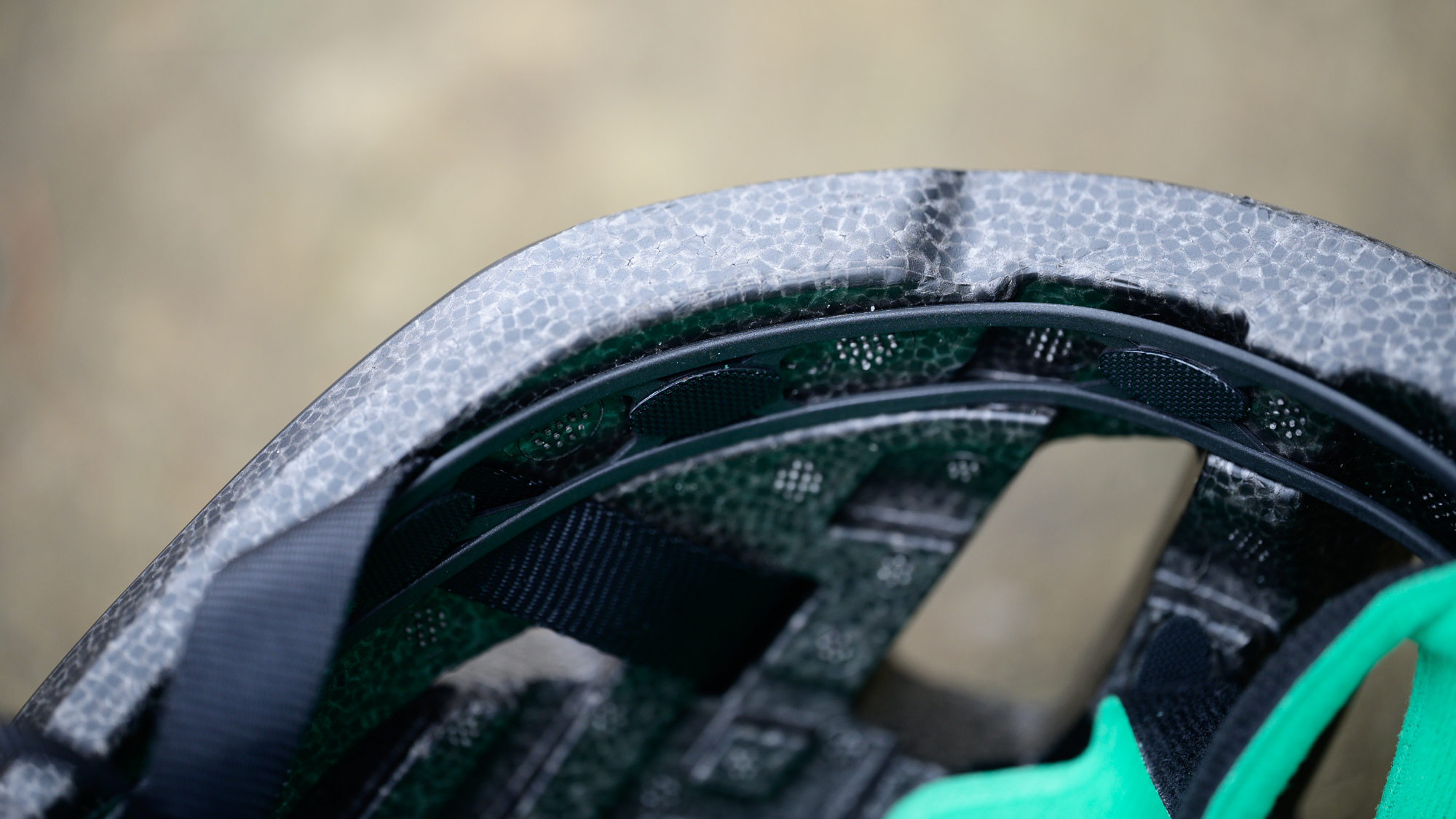
Price: £59.99 / $79.99
Available colours: Tour de France, Matte White Flash Orange, Matte Blue Black, Black Flash Yellow, White, Matte Black, Red Black, Cosmic Berry
Rotational Impact technology: KASK Rotational Impact WG11 Tested
Weight: 240g as tested in size small
Modern cycling offers a lot of options for anyone shopping for the best road bike helmets; our list has 12 choices and I would add more before cutting it down. The challenge is editing and distinguishing them apart more than it is finding options. Still, even amongst such stiff competition, Lazer helmets are a standout. Today the brand is a part of the greater Shimano portfolio but Lazer has a rich history dating back to leather helmets in 1919.
Modern Lazer offerings include top-tier options like the Z1 Kineticore for those who want an ultralight option and the Vento Kineticore for the more aero-minded out there. There are even great kids' bike helmets in the lineup and throughout everything you’ll always find a focus on weight. Nestled among the many options, there is also a lower-tier model that hasn’t gotten the same attention. Although the Lazer Tonic Kineticore fits into the lineup near the bottom, it manages to do that without losing sight of the top-tier models.
No one wants a cheap road bike helmet. Instead, good value and a reasonable price are the words worth searching for and that's where the Lazer Tonic Kineticore lives. I've featured this helmet several times since it first hit the market but after spending enough time with it, I'm ready to talk about the details. If you've seen the price of some modern road bike helmets - such as the Kask Elemento - and nearly lost your lunch, keep reading to see if the Lazer Tonic Kineticore makes sense for you.


Design and aesthetics
Over recent years, rotational impact has become the buzzword in helmet designs. A lot of that has to do with the rise of MIPS as an independent company. MIPS offers a solution to brands without the need for unique engineering. Some would say you can also blame some of the many headlines on the fact that MIPS is a business with a marketing budget but there is independent analysis as well. Virginia Tech is the go-to source for independent impact analysis and MIPS products tend to do better in those tests. Despite all that, there are other options.
- What is MIPS? Everything you need to know
MIPS is not the only solution to the challenge of rotational impact protection. There are a few brands that have started to stray from the MIPS umbrella and develop unique solutions to the problem. Lazer is one of those brands and the technology Lazer brings to the table is Kineticore. Almost all of the modern round of Lazer helmets now use Kineticore and, as the name gives away, the Tonic Kineticore is one of them.
Kineticore works by moulding a series of blocks and valleys into the foam inner of a helmet. In the event of a crash, the blocks deform and break off to both absorb energy and allow the skull to rotate within the helmet.
Using Kineticore offers a reduction of complexity in the design but it also allows Lazer to offer a unique selling proposition. Basically, there's no clear advantage or disadvantage to one vs the other but it's different. It does solve the annoyance of having a MIPS liner, which many people dislike due to the reduction in airflow it can create, especially in cheaper helmets, but compared to more recent premium MIPS solutions it's only really a lateral move.
As I said though, Kineticore tends to be a defining feature. In the case of a budget helmet like the Tonic Kineticore, the technology helps keep costs low while maintaining the rotational protection and moving air through. MIPS might have new versions that do away with the liner but they do cost more and don't often show up on budget helmet options. By keeping everything in-house, Lazer can offer top-tier-equivalent technology on a budget helmet.

The other advantage at this price range is breathability. In order to allow room for Kineticore blocks to break and deform there are valleys between them. Those valleys act similarly to the more expensive 3D-modelled designs on top-tier helmets that allow air to flow through them. The Tonic might not match the ventilation on a more expensive model but the channels help without jacking up the price.
Outside of Kineticore, the design of the Lazer Tonic is standard but relatively high quality. At first glance, the closure system is reminiscent of POC helmets with a design that circles the entire head but it stops at the temples. If you are shopping around, it may not be immediately obvious that this is the case as it appears that the rear dial connects to a single unbroken "halo" of plastic. The halo is anchored from behind at the temple though so if that's an issue for you, be aware.
Aside from that visual quirk though, it's not unlike many other adjustment systems. Even though the halo anchors at the temples, it does float in the front of the helmet and there is venting behind it to dry the front pad. At the rear of the helmet, it's simple to vertically adjust the cradle and there's plenty of room for a ponytail above the rear dial. The padding consists of a single piece with a "T" shape covering the brow and the centre of the head.



Performance
The first thing to keep in mind is that the sizing of the Lazer Tonic Kineticore runs a little different than a lot of manufacturers. The upper end of small is 5mm larger than some brands and there's also an XL making four size options instead of three. For me that translates into wearing a small instead of a medium and having a trimmer, closer to the skull, outer profile.
Another odd quirk of the Lazer Tonic is the weight. Lazer is always well known for offering lightweight helmets and that is definitely the case here. The Tonic Kineticore is one of the lightest helmets I have tested, at only 240 grams for a size small. The odd bit is that a size medium is also 240 grams. The Lazer Z1 Kineticore has the same oddity and in both cases, it's because of a slightly different foam in the different sizes. Although I find this interesting, the bottom line is that it doesn't matter if you choose a medium or small, it weighs in at 240 grams. As a point of reference, the only lighter helmet in the buyer's guide is the Lazer Z1 Kineticore at 226 grams and a much higher price point.
Aside from sizing quirks though, a budget model can sometimes be a challenge to talk about in the performance section and that's certainly an issue this time. There are no cutting edge carbon fibre plates or 3D printed pieces, as per the Elemento I also reviewed this week, and that can leave the experience of wearing it feeling a bit thin on details.
What's great about the Lazer Tonic at this price point is that it disappears out of your consciousness as you are wearing it. It's exceptionally light even compared to more expensive helmets but otherwise, not quite a class leader in other categories. Cooling is good but not the best. There's a lot of adjustability in the rear cradle, with lots of room for a ponytail, but the straps tend to loosen and the helmet moves a bit more than some. Stashing glasses in the vent holes is doable, but it's not seamless with all makes and models, so it's a hit-and-miss experience depending on which you own. Overall, it's easy to pick apart in the harsh light of a review when it's compared to the best on the market but it is actually a really good all-rounder helmet, and, again, a crazy good price.




The only places you might notice a bit of cost savings are in the straps and padding. As I mentioned, the straps have a tendency to loosen a bit and they are heavier with a less premium feel. The padding is also a bit less premium feeling with a rougher texture than some. Seriously though, none of this is a big deal. Even as I was writing it I went to check other helmets and just double-check that I wasn't imagining these details. I'm not, indeed, the straps and the pads aren't the most premium feeling, but it's subtle. When I wear the Tonic a few days in a row, it's easy to forget about the shortcomings.
One area that I don't think you can fault is the style. I'm certainly not the final word on fashion but I think I have a good sense of what works and what doesn't when it comes to road and gravel. The Lazer Tonic is a helmet I don't mind grabbing for a wide range of riding styles. It works when I'm hammering on a road bike but it also works with more casual clothes on a less aggressive road bike or a gravel bike. It's not quite a city bike option for me but anything sportier and it fits right in.


Verdict
The Lazer Tonic Kineticore is not a class-leading helmet. I have to keep mentioning how light it is because it's an impressive stat but otherwise, it's a little hard to pick out anything as being amazing. In this case, though, that's okay. The price is so good that what you want is a helmet that looks good and feels good to wear and that's what you've got. The padding and straps feel a little less premium but there's otherwise very little to dislike about this helmet. If you are just dipping your toe into cycling or you've got a lower budget, there's nothing about the Tonic that will hold you back. Pick a colour you like and feel free to feel smug at how much money you've saved.







